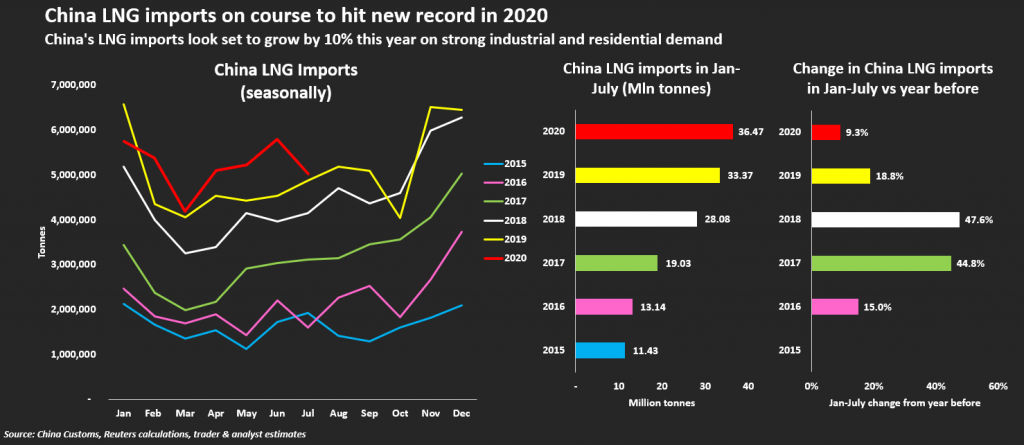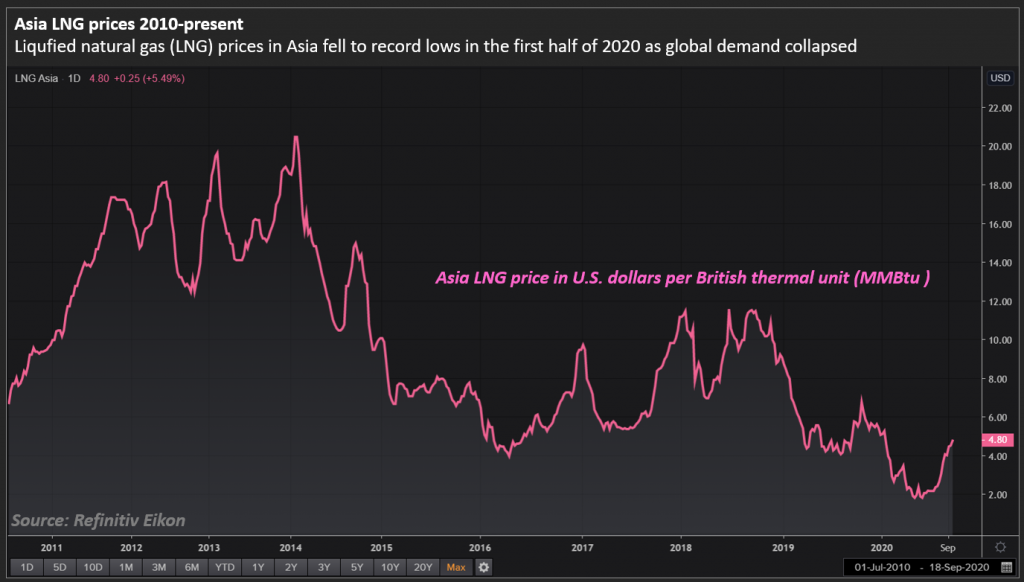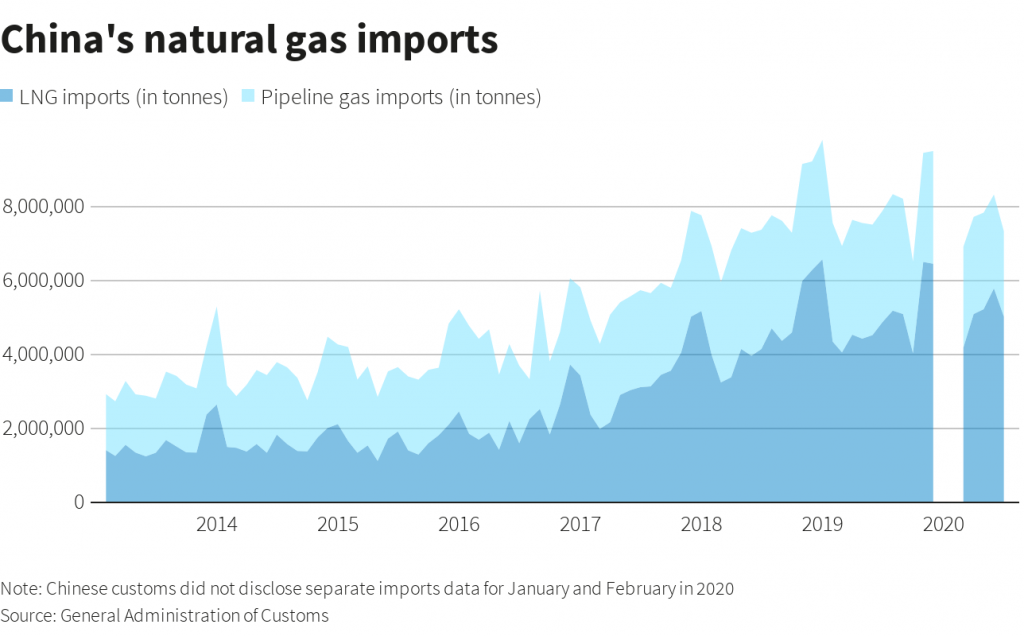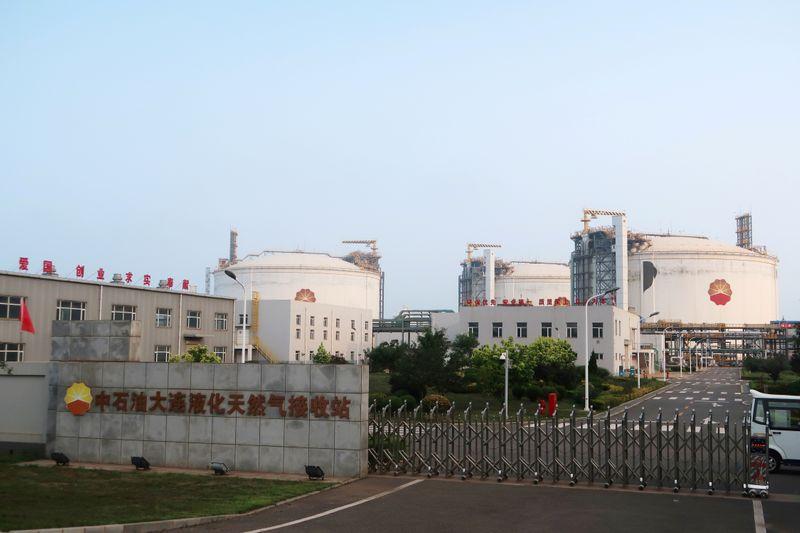China’s imports of liquefied natural gas will likely grow 10% to new highs this year as companies scoop up cheap supplies to cover increasing industrial use and robust residential demand.
With its total natural gas use likely expanding at 4-6% this year, China is the only major bright spot on the world gas market, where demand is set to fall by about 4% as the global economy contracts due to coronavirus lockdowns.
LNG imports are set to hit a record 65-67 million tonnes this year, analysts and Chinese traders estimate, a tenth more than 2019’s total and at a growth rate that could see China overtake Japan as the world’s top buyer by 2022.
Graphic – China LNG imports:

Some analysts believe China’s economy is now pretty much back to its pre-virus growth path.
“After taking a brief hit earlier this year due to the COVID-19 pandemic, China’s gas demand recovered faster than expected, driven mostly by the industrial sector that has recovered to 2019 levels since May, ” said Alicia Wee, analyst at FGE.
Companies booked more super-chilled gas from Qatar, Russia and Australia, taking advantage of record-low prices LNG-AS earlier in the year as demand sagged elsewhere.
Graphic – Asia LNG prices since 2010:

To accommodate higher LNG imports, top gas importer PetroChina reduced costlier pipeline supplies from central Asia, mainly Kazakhstan, using contract tolerances, said a Beijing-based PetroChina official.
“(Fourth-quarter)imports will remain robust…as LNG is both more competitive and flexible versus pipeline gas, despite a recent spot price spike,” Lu Xiao, senior analyst at IHS Markit.
January-August imports of LNG rose 10.3% over the same year-ago period to 42.2 million tonnes, while piped gas fell 7.4%, Chinese customs data showed.
Graphic – China’s natural gas imports :

China sees natural gas as a bridge fuel on its long journey to reach carbon neutral by 2060, and since 2016 has switched millions of homes and thousands of factories to gas from coal.
The gasification pace slowed along with the economy since 2019, but new pockets of industrial demand have emerged in manufacturing hubs like south China’s Guangdong and east China’s Shandong provinces.
In Guangdong, China’s first region to import LNG, authorities are pushing ceramic and glass makers to burn gas instead of coal, which will likely generate up to 8 billion cubic metres of fresh gas demand this year, or 2.6% of the national total, according to a report carried this week by the Shanghai Oil and Gas Exchange.
Guangdong, the top gas power generator by province and second-largest gas consumer after Jiangsu, added 3 gigawatts of capacity in the first eight months to raise its total to 26 GW, more than a quarter of China’s total, said IHS Markit’s Lu.
Residential demand also continues to grow, accounting for roughly 30% of total demand, said independent gas distributor ENN Energy Holdings 2688.HK and China Resources Gas Group Ltd 1193.HK, which each connected over one million households to their pipeline network in the first half of 2020.
Graphic – China’s natural gas consumption by sector:

WINTER COVERAGE
Despite the growth in demand, China is not expected to suffer supply shortages during the cold winter months when demand peaks.
Domestic gas production has also expanded. It is up nearly 9% in the first eight months versus a year ago as PetroChina and CNOOC Ltd 0883.HK stepped up domestic drilling to meet national supply obligations.
Companies have also filled underground storages with total effective working capacity of 14 billion cubic metres.
“Sufficient supplies and flexible demand make gas shortage a remote possibility,” said Huang Miaoru, senior manager at Wood Mackenzie.




























